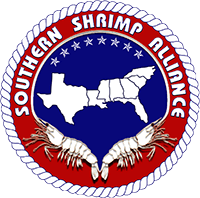| As part of the First International Conference of Fisheries and Marine Science held by Universitas Airlangga, the second oldest university in Indonesia, researchers at the University published the results of a study evaluating the prevalence of antibiotic-resistant salmonella in seafood and seafood products in Surabaya, the second largest city in Indonesia.
The paper, Detection of Antibiotic-Resistant Salmonella sp. in the Seafood Products of Surabaya Local Market, observed that prior investigations had found “[t]he occurrence of Salmonella in fresh shrimp in five traditional markets in Surabaya [at] a rate of occurrence of 36%.” To update those findings and to evaluate the presence of salmonella on other seafood products, the researchers took twenty-nine seafood samples (of which six were shrimp) from five different traditional markets throughout Surabaya. Out of the twenty-nine samples taken, the researchers found salmonella on twenty-seven of them (including on all six shrimp samples), a prevalence rate of 93%.
The paper explained that “antibiotic resistance to Salmonella has also become a worldwide concern” and “further research related to antibiotic resistance profiling on Salmonella isolated from Surabaya’s traditional market is needed.” Accordingly, the researchers tested the salmonella discovered for antibiotic resistance, finding that “100% were resistant to erythromycin” and “12.12% of the isolates were resistant to tetracycline.” The paper explained that “[t]he resistance test results showed that the majority of the isolates were sensitive to antibiotics used” and that “there were 8 isolates that were resistant to at least one antibiotics, and even resistant to more than two antibiotics (multidrug resistant).”
The researchers noted that their findings were consistent with several previous studies done regarding the presence of salmonella in seafood. The paper further pointed to a report published in 2004 by the Economic Research Service of the U.S. Department of Agriculture (USDA) emphasizing the risks presented by salmonella contamination of seafood imported into the United States, particularly shrimp. Looking at U.S. Food and Drug Administration refusal data for 2001, the USDA’s paper reported that roughly 58% of all entry line refusals for salmonella were for shrimp. Because of the preponderance of shrimp imports found to be contaminated with salmonella, the USDA – fifteen years ago – recommended that risk mitigation strategies concentrate on the processing of shrimp in foreign facilities in developing nations:
“Therefore, risk reduction efforts could be focused here. With over one-quarter of shrimp production from aquaculture, research is needed to determine if improved sanitation during production could lessen the occurrence and extent of Salmonella contamination. This diligence will not solve all the problems because—unlike meat and poultry, where Salmonella may be a naturally occurring bacterium in the animals’ digestive tracts— Salmonella contamination in shrimp is often due to cross-contamination later during processing.
According to seafood experts, shrimp will continue to be produced primarily by developing nations and to dominate seafood trade from developing nations to developed nations for the foreseeable future. Some research has found that less developed countries often have difficulty meeting the required quality and safety standards because of a lack of sufficient funds to invest in quality control measures, adequately trained staff, and expensive equipment.”
The abuse of antibiotics in aquaculture in developing countries raises serious concerns about the spread and development of antimicrobial resistant pathogens. But the paper recently published by the University of Airlangga researchers underscores the fact that shrimp, as a commodity product traded around the world, is a vehicle for the spread of antimicrobial resistant pathogens that may harm consumers, such as salmonella. Because there is little understanding of the extent of the threat posed by antimicrobial resistant pathogens to human health, studies such as those conducted by the University of Airlangga researchers play an important role in helping the public, as well as policy makers, understand what issues require further examination and investigation.
Read H. Pramono; A. Kurniawan; N. Andika; T.F. Putra; M.A.R. Hazwin; S. Utari; A.P. Kurniawan; E.D. Masithah; and A.M. Sahidu’s “Detection of Antibiotic-Resistant Salmonella sp. in the Seafood Products of Surabaya Local Market,” IOP Conf. Series: Earth and Environmental Sciences 236 (2019) here: https://shrimpalliance.com/wp-content/uploads/2019/06/Pramono_2019_IOP_Conf._Ser.__Earth_Environ._Sci._236_012115.pdf
Read more about the First International Conference of Fisheries and Marine Science here: http://icfm.fpk.conference.unair.ac.id/
Read the USDA’s ERS paper “Seafood Safety and Trade,” Agriculture Information Bulletin Number 789-7 (Feb. 2004): https://www.ers.usda.gov/webdocs/publications/42547/aib-789-7.pdf?v=752.9
|
